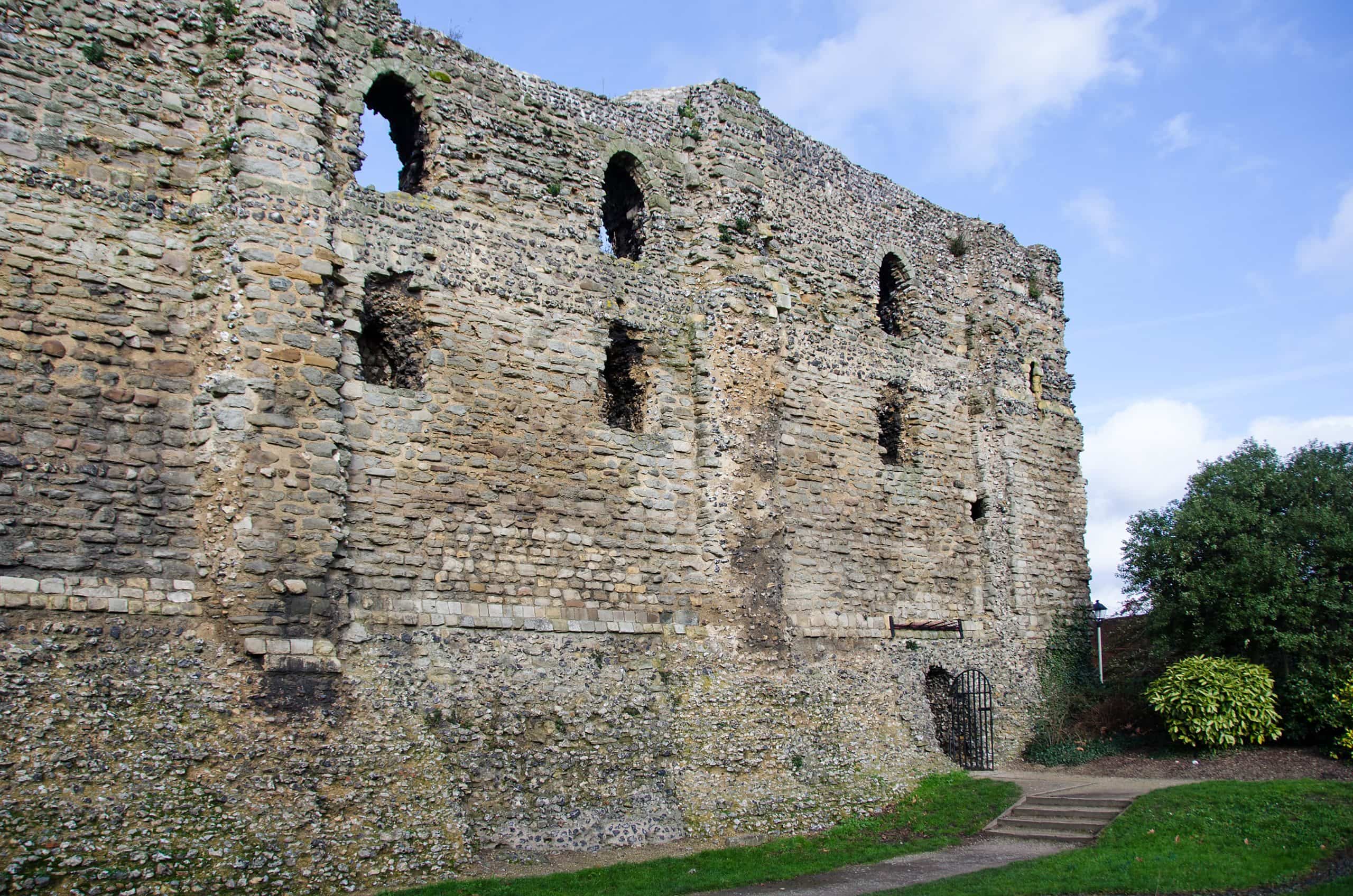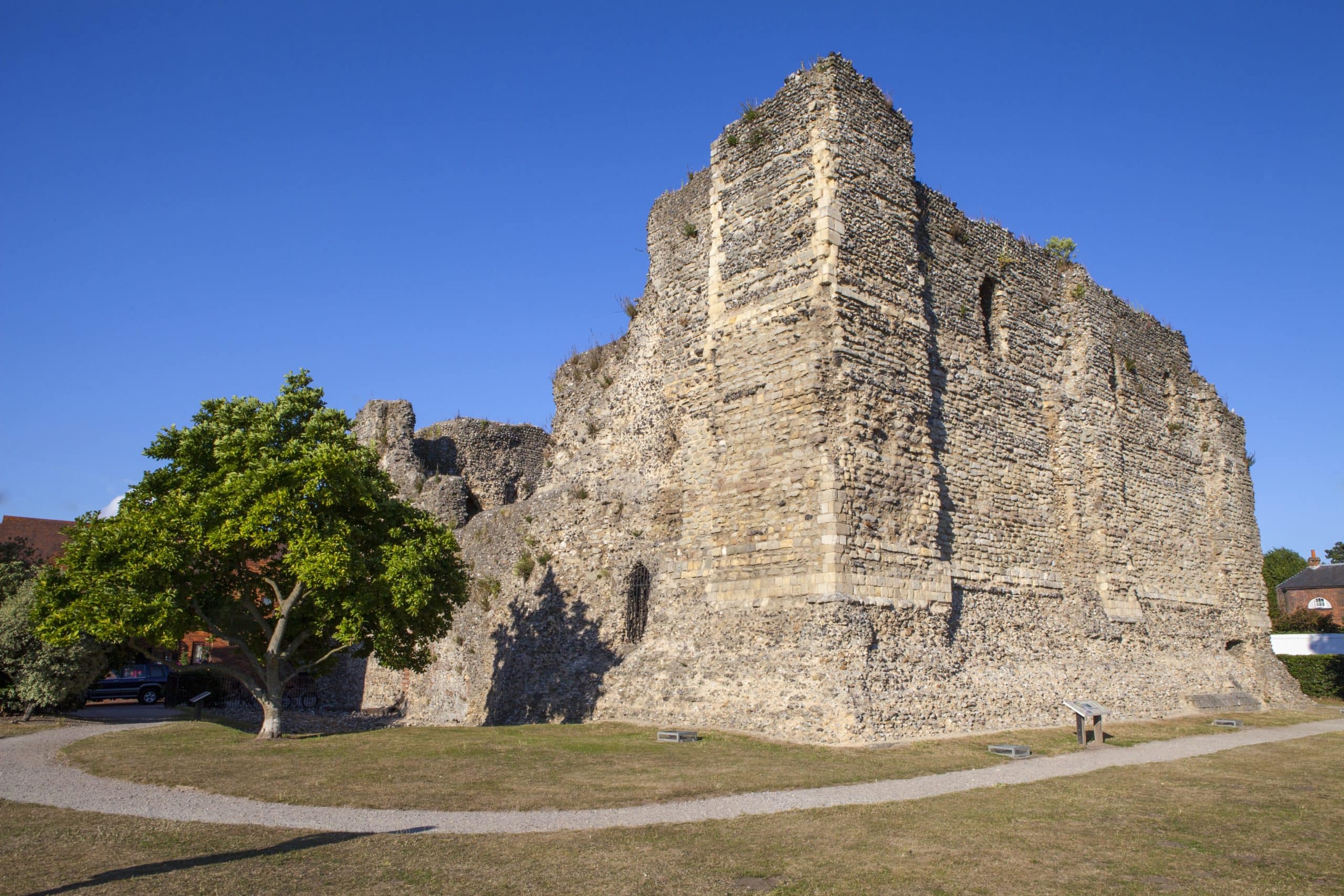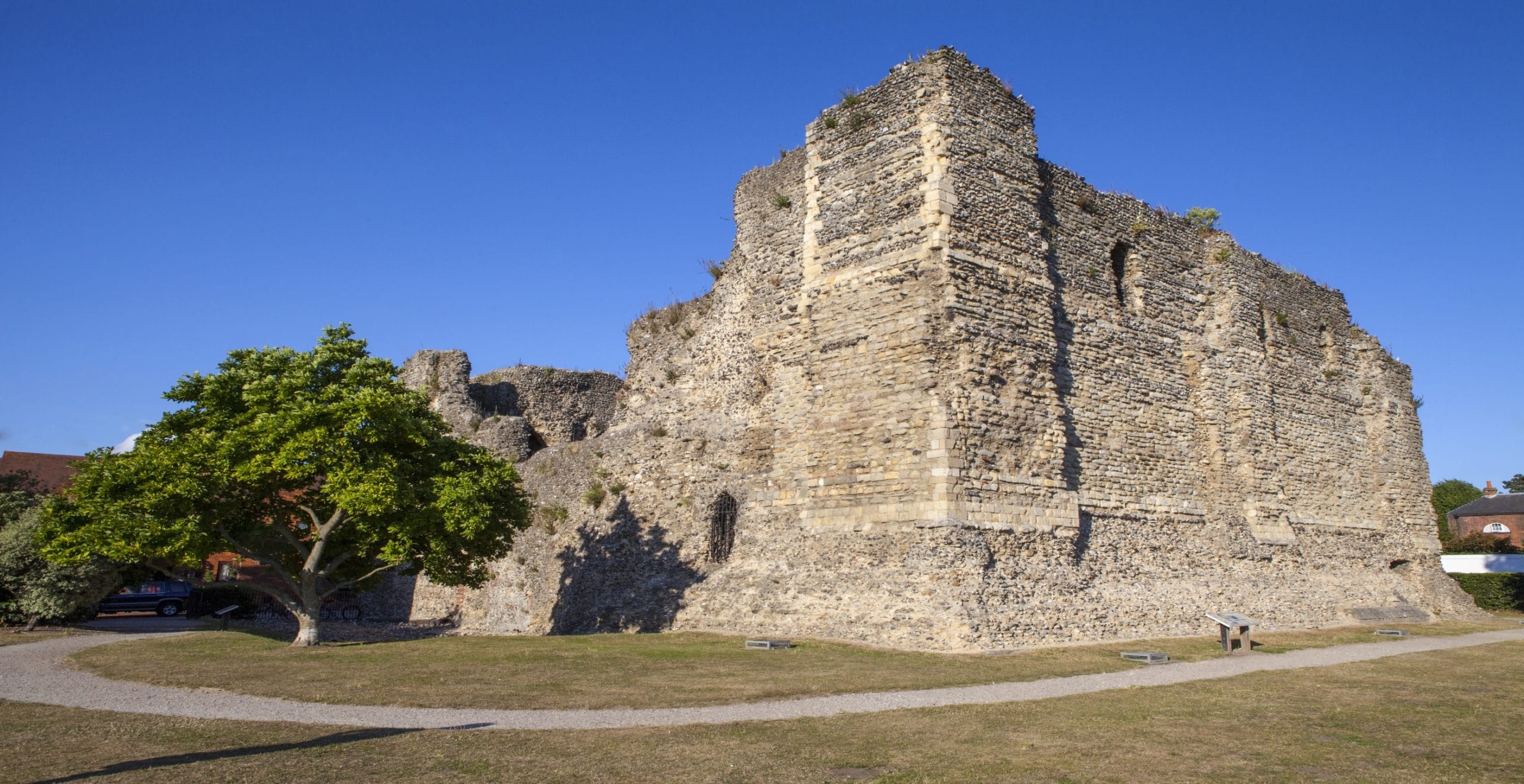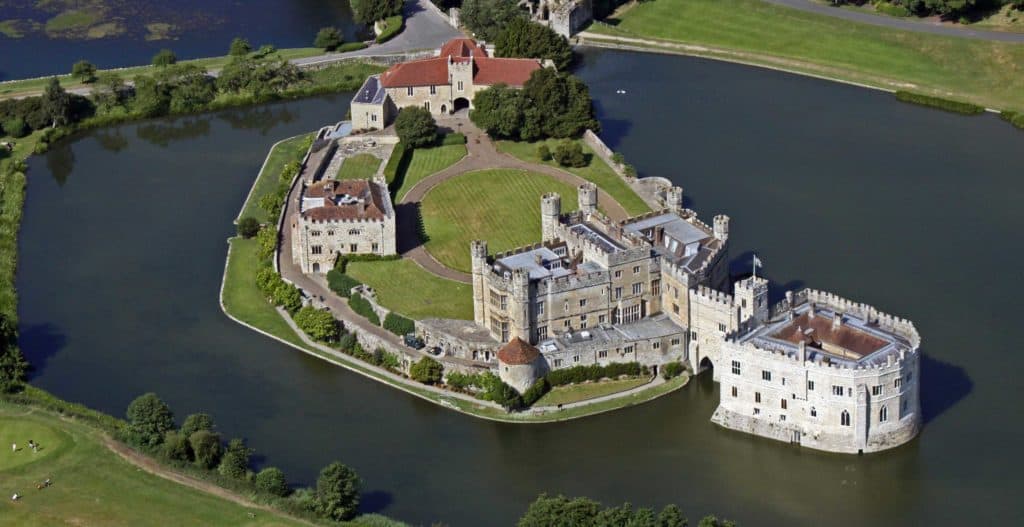Owned by: Canterbury City Council
Opening times: Free open access at any reasonable time
Shortly after Canterbury submitted to William the Conqueror in October 1066, a simple motte and bailey structure was erected. One of the three royal castles of Kent, the motte is still visible as the mound in Dane John Gardens, a corruption of the French word ‘donjon’, or keep. Construction of the great stone keep took place between 1086-1120. However, after Henry II built his new castle at Dover, Canterbury Castle declined in importance and became the county gaol.

While the keep itself is ruinous and partly restored, a substantial section of the town wall remains, and both keep and wall tell a story which long predates the arrival of William the Conqueror. The medieval wall followed the same two-mile long circuit as the wall constructed by the Romans in the 2nd century AD, when Canterbury was Roman Durovernum. Today nearly all the wall that remains is of medieval date and is a 14th century construction built against the threat of invasion by the French. The surviving bastions along its length have the keyhole gun ports that are typical of the early days of cannon use.
A great deal of the outer stone facing of the keep has disappeared, taken for reuse elsewhere, so the inner rubble core is visible. Investigations revealed that originally there would have been a first-floor entrance. The damage that the keep suffered over the centuries is relatively well-documented, beginning with an apparent order for repairs in the 1170s. It was besieged twice, once by the Dauphin Louis and then by Wat Tyler and his followers, who overwhelmed the castle and set its prisoners free. By the 17th century it had fallen into ruin, exacerbated by its use as a storage facility by the Canterbury Gas Light and Coke Company in the 19th century. It came close to being demolished in the early 1800s. Canterbury City Council purchased the castle in 1928 and have restored to the ruins to their current condition.






